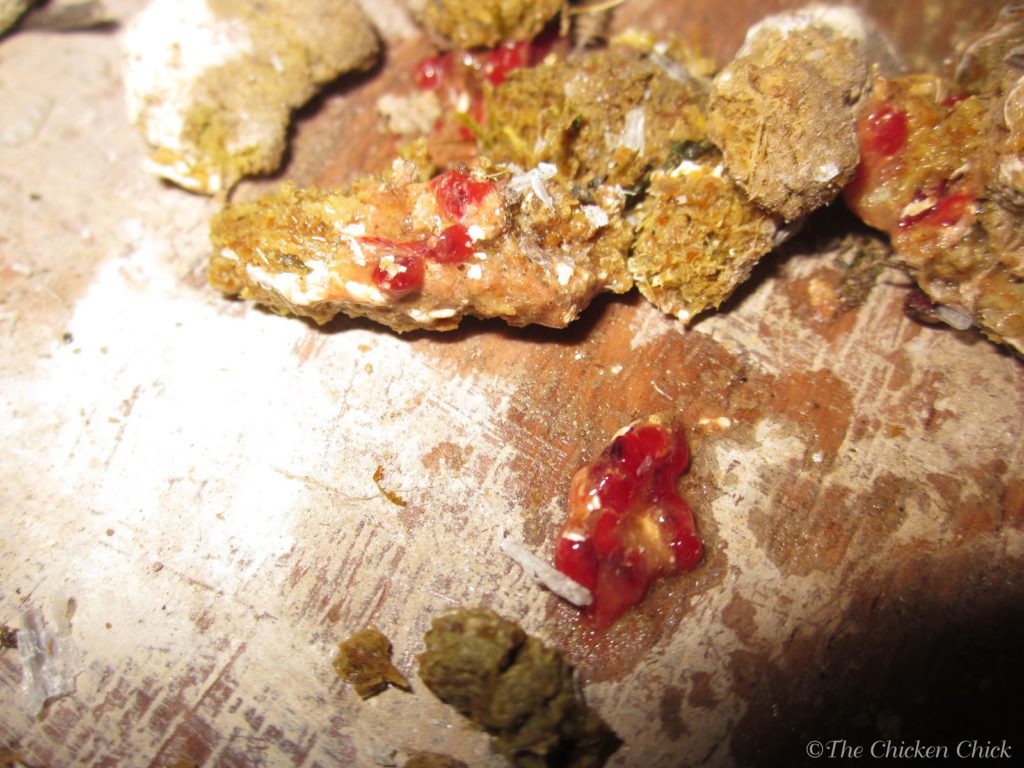Have you seen bloody droppings in your kienyeji chicken flock lately?
Your Kienyeji chickens are likely to be affected by two main kinds of diseases: diarrhea and respiratory diseases. Normal droppings from your chickens should always be firm and dark brown with a white part on the top. Whenever you see deviations from that such as bloody droppings or yellow foamy droppings, then there is something abnormal about that and this could be cost by a variety of diseases or dietary conditions.

The most common causes of diarrhea in chicken include the following:-
- Coccidiosis
- Bacteria diarrhea
- Worms
- Viruses
- Kidney damage
- Very high protein content in the feeds
For bloody diarrhea or bloody droppings, Coccidiosis is often the culprit and this often happens in poultry that are below 10 weeks of age. In severe cases, it can lead to deaths. Coccidiois usually occurs at any time and at any age, however. The best way to prevent it is through cleanliness. Ensure the poultry house is cleaned regularly. Change the litter often, at least monthly but after every two weeks is better. All the feeding troughs and drinkers must be cleaned regularly. Clean at least twice a day-in the mornings or evenings. Inspect often and clean any feeders and drinkers which might contain dirt such as chicken droppings in drinking water or feeding troughs.
The disease is transmitted through the ingestion of contaminated feed or drinking water with bird ‘s droppings containing oocysts. Without proper management, mortality rate is likely to be high, particularly in the 6th to 8th week of the birds’ life.
If the birds are treated, resistance will develop after the infection. The bird will have bloody diarrhea, ruffled feathers and a drooped head. In young chicks, it is likely to cause deaths. One of the best treatment forms is adding Coccidiostats in the feeds or drinking water. Certain commercial feeds have coccidiostats as some of the ingredients and these can prevent the infection.
The Use of ESB3 in Treatments
One of the most recommended treatments for Coccidiosis is ESB3 antibiotic. This is mixed with water and given to all the birds. The infected birds which are weak can also be isolated from the rest for the flock and given ESB3 for three days based on recommended dosage and observed for signs of recovery. When administered, the ESB3 will reduce the rate of mortality and increase the productivity of the chicken as well performance. The ESB3 is a broad-spectrum antibiotic and is used in treating not only coccidiosis and other bacterial infections in the poultry. In Kenya, a sachet of ESB3 costs about Ksh.250. Contact your local vet for the right ESB3 dosage based on the size of your flock. Other drugs used in treating Coccidiosis include Amprol and teramycin. You can also focus on giving your chicks feeds mixed with coccidiostats such as Amrolium.
Management and Control: The Outbreaks should be treated immediately with the use of the coccidiostats ; Avoid the contamination of the feeds and the water by bird’s droppings; avoid wet litter; avoid overcrowding; Coccidiostats mixed in the feeds for the young flock of birds.
Additional Preventive Measures Against Diarrhea in Your Poultry
There are various steps that you can take in order to prevent in your poultry. These include the following:-
- Offer the chicks top quality commercial feed in the first 8 weeks
- Ensure the feed given is always fresh, dry and suitable for the age of the bird. Don’t store the feed in a damp place.
- Supply regular fresh drinking water. Ensure all the feeders and drinkers are clean. Inspect the poultry often for any signs of contamination of the feed or water and act immediately where there is contamination.
- Clean and disinfect the kienyeji chicken house often.
- Deworm the birds every three to four months